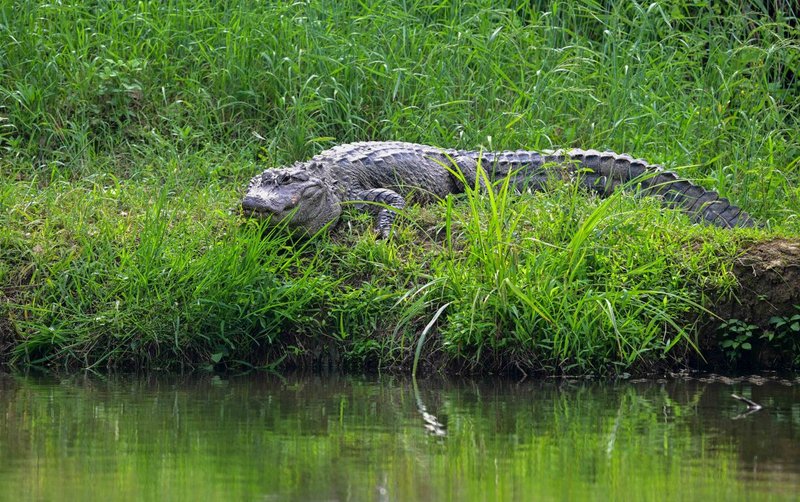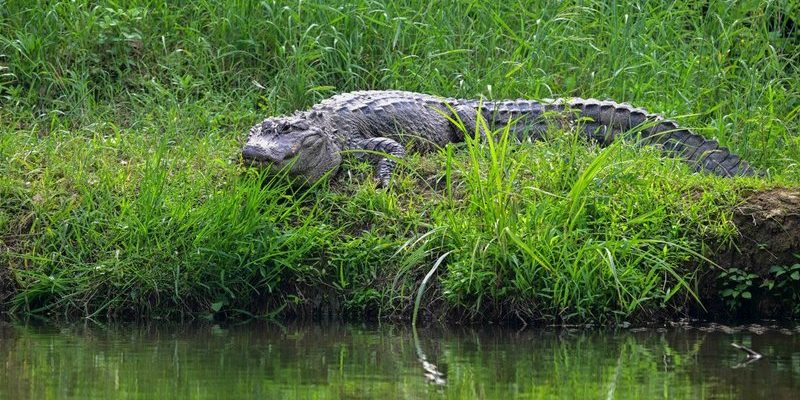
As we dive into this topic, think of the Chinese alligator as a puzzle piece in the grand picture of biodiversity. Losing this piece could mean significant changes to its ecosystem, impacting everything from plant life to other animal species. Let’s explore the status of the Chinese alligator and the important conservation efforts aimed at protecting it.
The Status of the Chinese Alligator
You might be wondering, why should we care about the status of the Chinese alligator? Well, to put it simply, this reptile is classified as critically endangered by the International Union for Conservation of Nature (IUCN). With fewer than 150 individuals believed to remain in the wild, it’s clear that their numbers are dwindling.
The main threats to the Chinese alligator include habitat loss and degradation. Urban expansion, agriculture, and pollution are wreaking havoc on the wetlands where these alligators thrive. Imagine living in a cozy home, only to see it slowly replaced by a sprawling city. That’s what’s happening to the alligator’s natural habitat, pushing them closer to the brink of extinction.
Given their precarious status, every little bit of information about the Chinese alligator helps raise awareness. Scientists and conservationists are working hard to study their behavior, breeding habits, and habitat needs. Understanding these factors is essential in creating effective conservation strategies.
Why Are Chinese Alligators Important?
Understanding why the Chinese alligator matters goes beyond just its unique appearance. Like alligators in general, they play a crucial role in their ecosystems. As apex predators, they help keep populations of fish and other prey animals in check. This balance is vital for maintaining healthy aquatic environments.
Let’s think about it this way: if you’ve ever tried to bake a cake, you know that each ingredient matters. Skip the eggs, and you’re left with a crumbled mess. In the same way, if the Chinese alligator disappears, it disrupts the entire wetland ecosystem, leading to overpopulation of certain species and a decline in others.
Their importance resonates far beyond themselves—Chinese alligators contribute to biodiversity, which is essential for a resilient environment. This biodiversity can also have impacts on human activities, like fishing and agriculture, which depend on balanced ecosystems.
Conservation Efforts Underway
So, what are people doing to save the Chinese alligator? A variety of conservation efforts are underway, aimed at both protecting existing populations and restoring their habitats. One notable initiative is the establishment of protected areas in their native range. These areas serve as safe havens, allowing the alligators to thrive without the threat of human interference.
Organizations like the World Wildlife Fund (WWF) and local NGOs are also conducting breeding programs to boost population numbers. These programs aim to raise young alligators in captivity and then release them into the wild, gradually increasing their numbers. Think of it as a protective “nursery” for these animals, giving them a fighting chance in an increasingly hostile world.
These efforts don’t just focus on the alligators themselves; they also emphasize community engagement. By educating local people about the importance of these reptiles and their habitats, conservationists encourage sustainable practices that benefit both the alligators and the community.
The Role of Education and Awareness
Let’s be honest: raising awareness is half the battle when it comes to conservation. Without understanding the plight of the Chinese alligator, people might not feel compelled to take action. Educational programs are vital in this respect. Schools, community centers, and even social media platforms are powerful tools for spreading the word.
By showcasing the incredible life of the Chinese alligator and the challenges it faces, these programs inspire a new generation to care about wildlife conservation. Imagine a classroom where kids learn about these alligators, complete with videos and activities that capture their imagination. That’s how we create advocates for the future.
Additionally, engaging storytelling—like documentaries or interactive exhibits—can create emotional connections between people and these fascinating reptiles. When people see the alligator’s struggles and triumphs, they’re more likely to take action.
Community Involvement in Conservation
Community involvement is a game-changer when it comes to conservation efforts. It’s all about making locals stakeholders in the survival of the Chinese alligator. When communities understand that the health of their environment is tied to the alligator’s well-being, they’re more likely to participate in conservation activities.
Programs that allow locals to participate in monitoring alligator populations or restoring habitats can have lasting effects. For instance, some initiatives provide training on sustainable fishing practices or eco-tourism, allowing communities to benefit economically while protecting their natural heritage.
This collaborative approach not only empowers communities but also creates a sense of ownership and responsibility. After all, who better to protect their land than the people who live there?
Challenges Ahead for the Chinese Alligator
Despite the ongoing efforts, numerous challenges still lie ahead for the Chinese alligator. One of the biggest hurdles is climate change, which is altering wetlands and affecting the delicate balance within ecosystems. Rising temperatures and unpredictable weather patterns can disrupt breeding cycles and habitats, making recovery even more complicated.
Moreover, urbanization continues to pose a substantial threat. The pressure for land development is relentless, leading to ongoing habitat fragmentation. Imagine a puzzle with pieces being taken away bit by bit—eventually, you won’t have a complete picture. That’s what’s happening to the alligator’s environment, and it’s a race against time to reverse this trend.
Another challenge is the illegal wildlife trade. Though the Chinese alligator isn’t as commonly trafficked as some other species, the potential for poaching still exists. Regulations and enforcement must be robust to deter would-be traffickers.
Looking Ahead: The Future of the Chinese Alligator
The future of the Chinese alligator hangs in the balance, but it’s not too late. With concerted conservation efforts, community engagement, and public awareness, there’s a hope that we can turn things around. It’s a bit like tending to a garden—if you invest the effort, you can help it flourish.
Continued research is crucial to understand their behavior and habitat needs better. As more people become aware of their plight, we can create an informed public that advocates for the well-being of these reptiles. It’s about creating a sustainable coexistence.
In conclusion, the Chinese alligator’s story is one of resilience and hope. While they face significant challenges, a combination of dedicated conservation efforts, community involvement, and education can carve a brighter path forward. Let’s rally together to protect these unique creatures and ensure they remain a part of China’s natural tapestry for generations to come.

